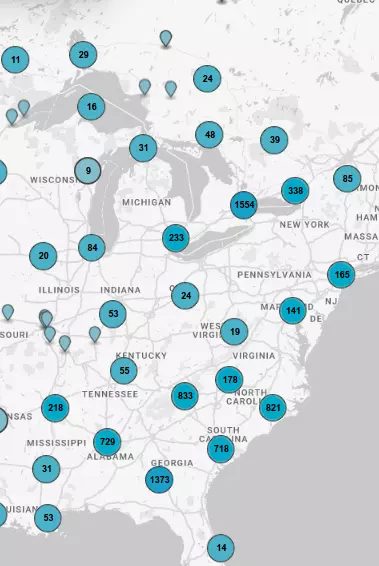Toronto General Hospital
This institution, the first general infirmary in Upper Canada, began operation in 1829. It was periodically hampered by administrative and financial difficulties but through the initiative of the...
- toronto
- ontario
- alan brown
The Tyrrell House
This building was the home of William Tyrrell. For twenty-seven years (1851-1878) he served on the councils of the Township of York and in 1881 became the first reeve of the town of Weston. Two of...
- toronto
- ontario
- alan brown
The Taylor Cemetery
John Taylor (1773-1868), his wife Margaret Hawthorne and seven children emigrated from Uttoxeter, Staffordshire in 1821. In 1839, three sons, John, Thomas and George, purchased this land from...
- toronto
- ontario
- alan brown
Teiaiagon and the Aboriginal Occupation of Baby Point
Up on the nearby promontory of land is one of the best-known First Nations archaeological sites in the City of Toronto. Aboriginal peoples likely used this advantageous site for thousands...
- toronto
- ontario
- alan brown
The Teamway
You are walking through the Teamway, now a pedestrian passageway running along the west side of the York Street "subway" or tunnel and underneath the railway viaduct. In earlier days, goods...
- toronto
- ontario
- alan brown
Town of North Toronto - Centenary
On 22 November 1889, the unincorporated villages of Davisville and Eglinton formally united to create the Village of North Toronto. Less than a year later, on 7 April 1890, it changed status...
- toronto
- ontario
- alan brown
Toronto-Dominion Centre
Situated at the heart of the Financial District, the Toronto-Dominion (TD) Centre is a cluster of six towers with 4.3 million square feet of space and a capacity of 21,000 office tenants, making...
- toronto
- ontario
- alan brown
Theodore August Heintzman 1817-1899
A German immigrant and veteran craftsman, Heintzman founded one of Canada's longest lived and most prominent firms of piano manufacturers. He first immigrated in 1850 to the United States where he...
- toronto
- ontario
- alan brown
The Thomson Settlement
The first permanent resident in Scarborough Township was David Thomson, a Scot who came to Upper Canada with his brother Andrew in 1796. Each was granted 160 ha and David built a log cabin on his...
- toronto
- ontario
- alan brown
The Toronto Necropolis Chapel
The chapel at the Toronto Necropolis, together with adjoining entry pavilion and superintendent's office and residence, constitute one of the finest examples of Gothic Revival architecture in...
- toronto
- ontario
- alan brown
Toronto Heliconian Club
The Heliconian Club, founded in 1909 to provide a forum for women in the arts, purchased this property in 1923. Opened in 1876 as the Olivet Congregational Church, this small Gothic...
- toronto
- ontario
- alan brown
The Toronto Purchase
In August, 1788, Alexander Aitkin commenced the survey of the western boundary of the lands purchased from the Mississauga Indians near here, at the mouth of Etobicoke Creek.Plaque via Alan...
- toronto
- ontario
- alan brown
Toronto Islands
The Mississaugas' traditional lands are located in southern Ontario. They spent their summers on these lands near the mouths of rivers and streams and on these Toronto Islands.The Toronto...
- toronto
- ontario
- alan brown
Timothy Eaton (1834-1907)
Born in Ireland, Timothy Eaton came to Upper Canada about 1854, eventually becoming a partner in his brothers' general store at St. Mary's. In 1869 he established his own business in...
- toronto
- ontario
- alan brown
Thornton and Lucie Blackburn
The Blackburn's determination to build free lives provides a window on the experience of many refugees in the Underground Railroad era. Having fled slavery in Kentucky, they were arrested...
- toronto
- ontario
- alan brown
The Toronto Carrying Place
What came to be known as the Toronto Route or Carrying Place actually consisted of two alternate passages: one ascended the Humber River to the Holland, while a lesser one began 40 kilometres...
- toronto
- ontario
- alan brown
To the Memory of the Stong Pioneer Family
Daniel Stong was born in Pennsylvania, U.S.A. in 1791, a descendant of Hans Stong (Stang) of Darmstadt, Germany, who emigrated to Buck's County, Pennsylvania, in 1709. In 1800, Daniel Stong and...
- toronto
- ontario
- alan brown
The Toronto Sculpture Garden
The Sculpture Garden is situated between two of the original "city buildings" built in the Georgian style of the early 1840s. This row between Church and Market Streets was a prominent part of the...
- toronto
- ontario
- alan brown
Transforming Village Life
Between 1450 and 1500, ancestral Huron-Wendat people transformed their village life. Small, unfortified communities merged into larger, more widely spaced villages built on hilltops for defence...
- toronto
- ontario
- alan brown
Toronto's First Chinatown
The first Chinese resident recorded in Toronto was Sam Ching, the owner of a hand laundry business on Adelaide Street in 1878. Though immigration to Canada directly from China was restricted...
- toronto
- ontario
- alan brown
